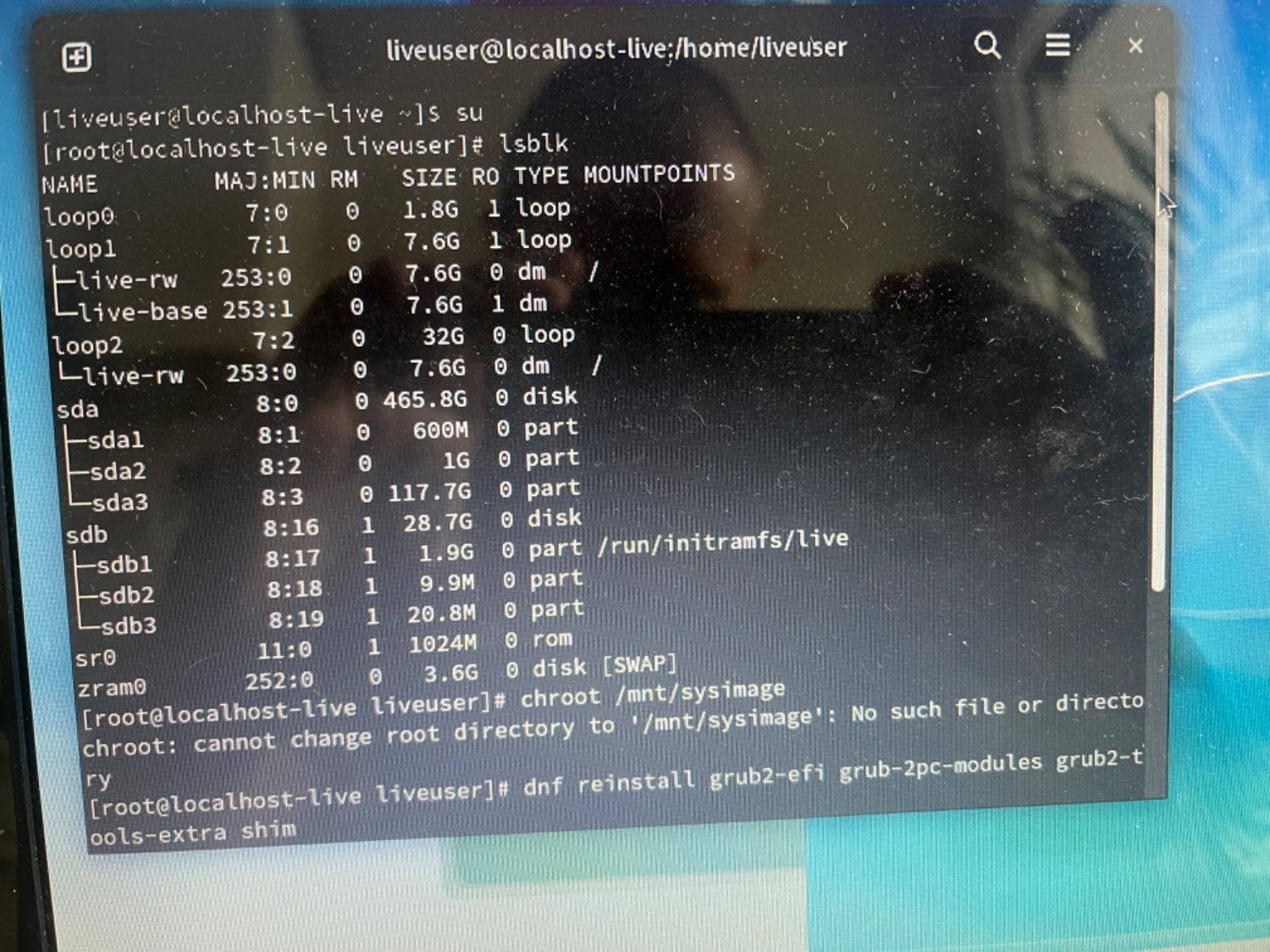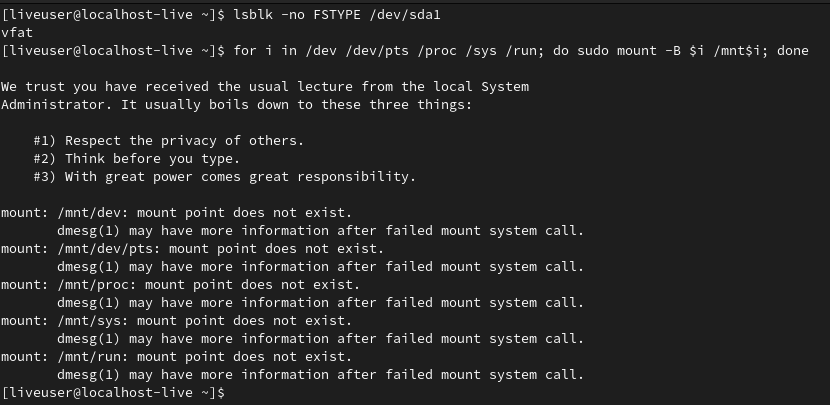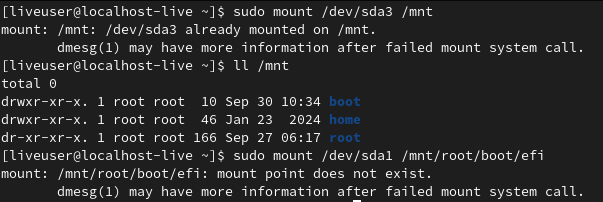Hey there!
It sounds like you’re on the right track! The black screen with a dash usually means the bootloader (GRUB in this case) might need some love. So, you’ll likely need to reinstall GRUB on your old Acer.
Here's a simple way to do it from your Fedora Live USB:
- Open a terminal (if it’s not already).
- Run
lsblkto confirm that your old Acer’s drive is/dev/sda. - Mount the Fedora partition with something like:
(Make suresudo mount /dev/sda1 /mnt/dev/sda1is the correct partition; adjust if needed). - Install GRUB by running:
sudo grub2-install --boot-directory=/mnt/boot /dev/sda - Then create a new GRUB config with:
sudo grub2-mkconfig -o /mnt/boot/grub2/grub.cfg - Reboot and fingers crossed, it should work!
It sounds a bit like magic (or some weird old ritual), but it should help your Acer find its way. Give it a shot! If it doesn’t work, let us know exactly what you see. We’ve got your back!








